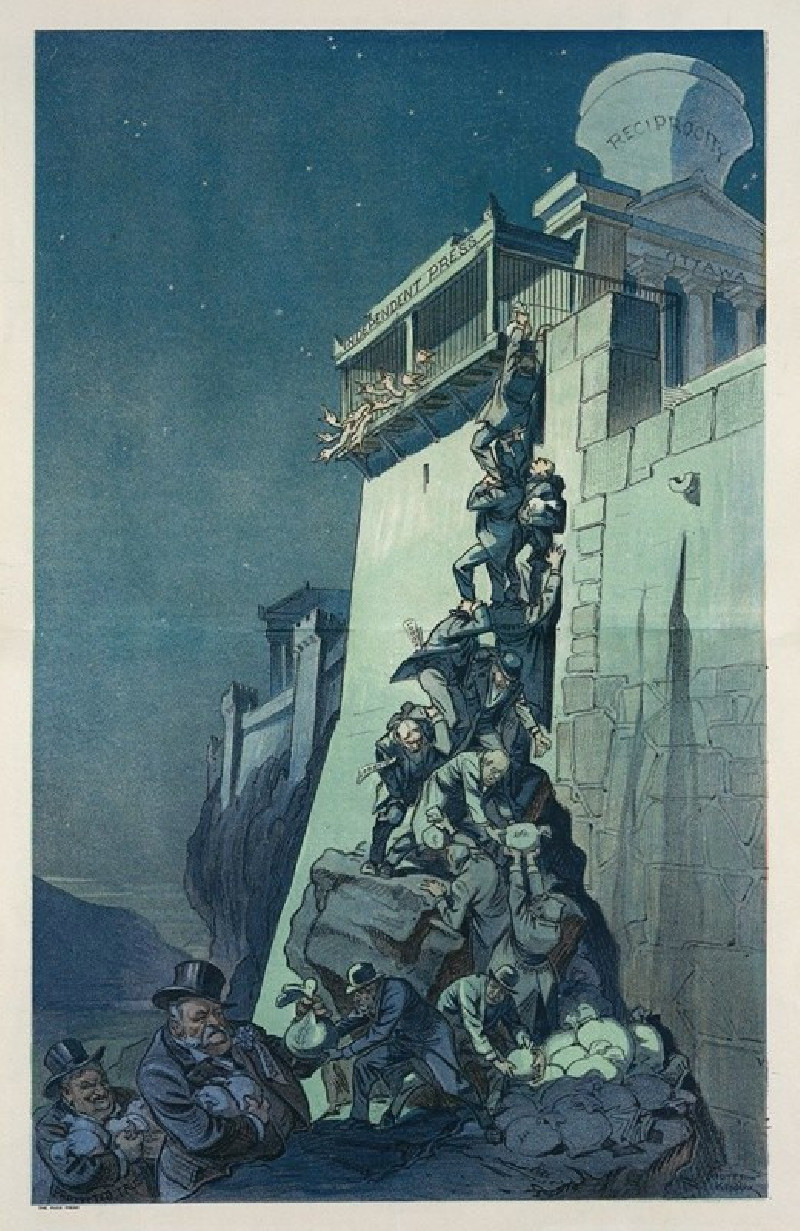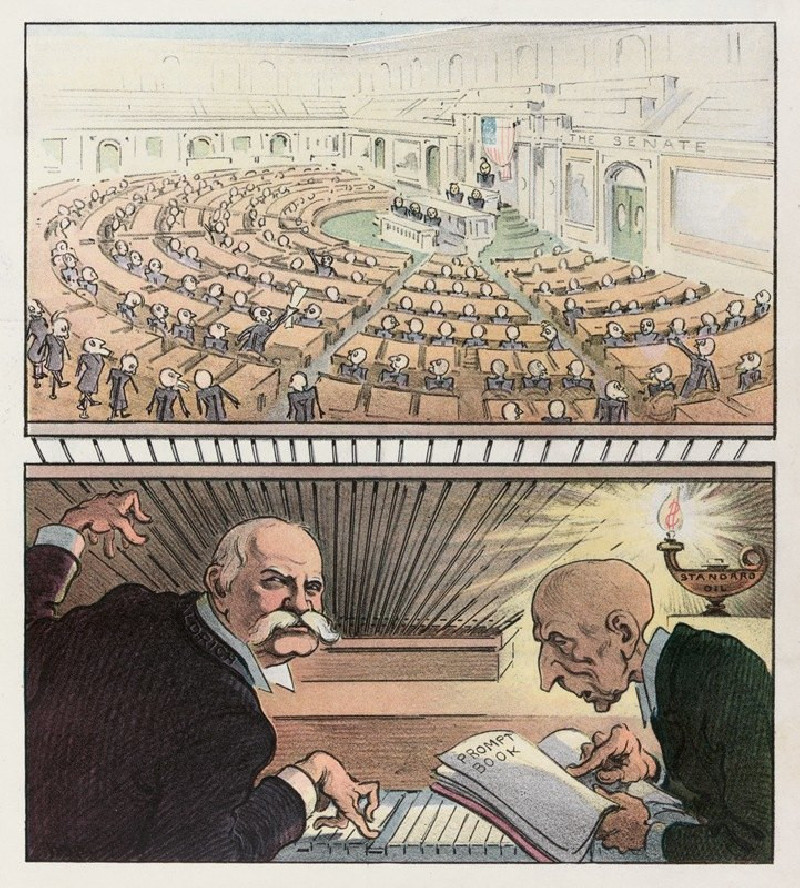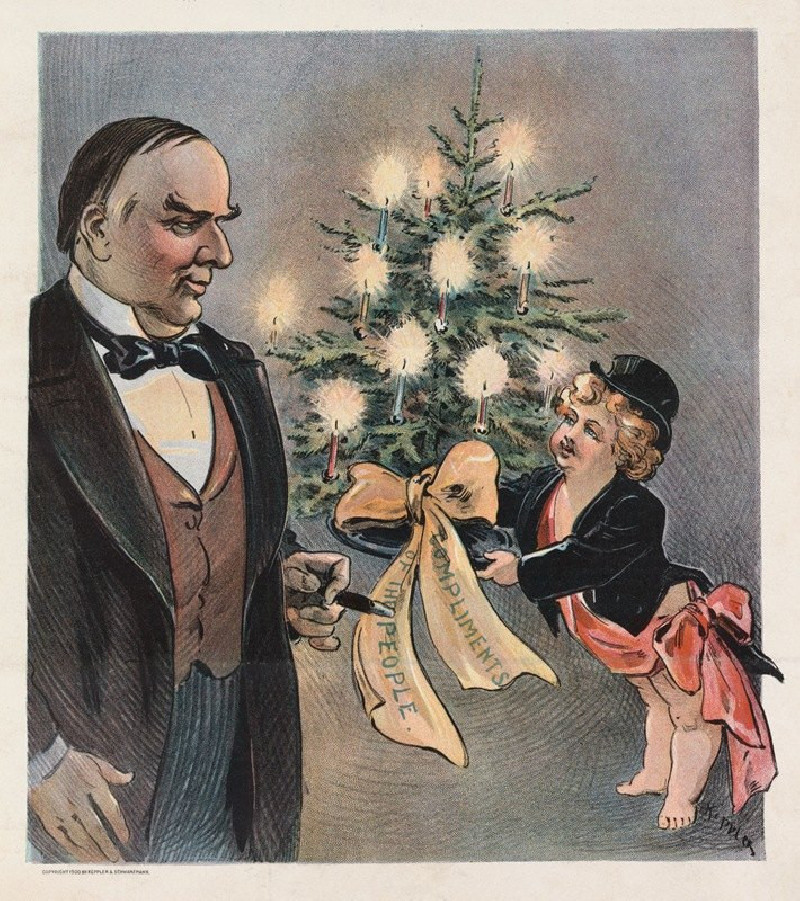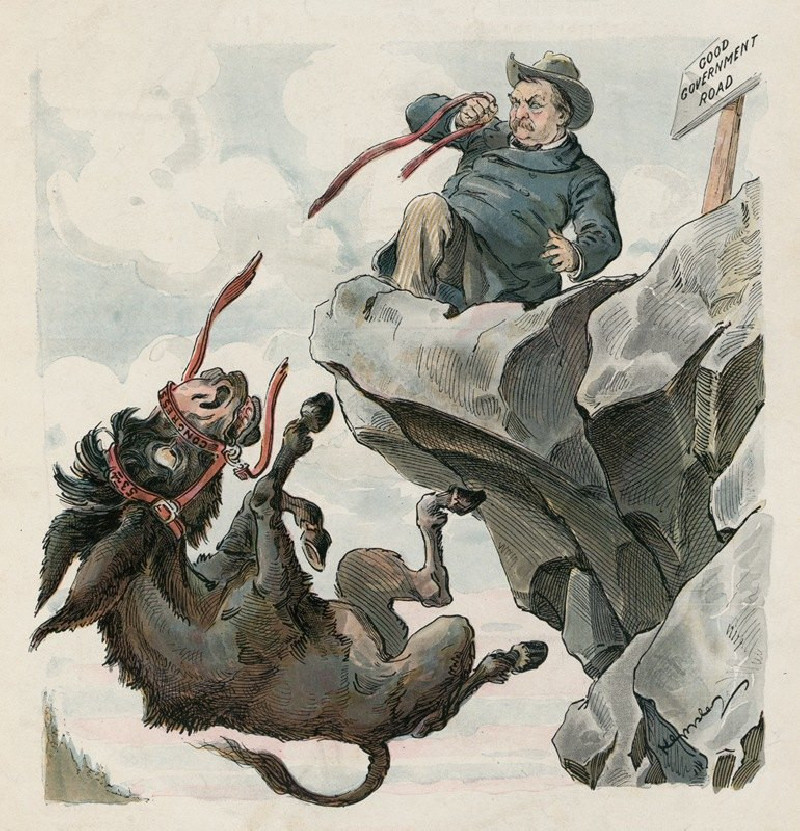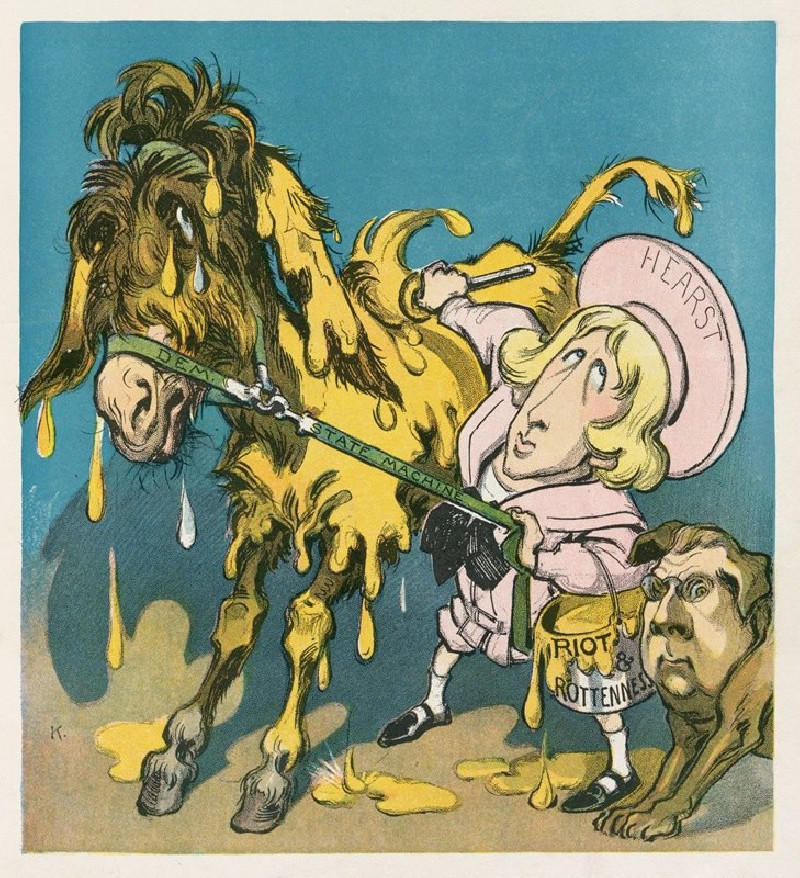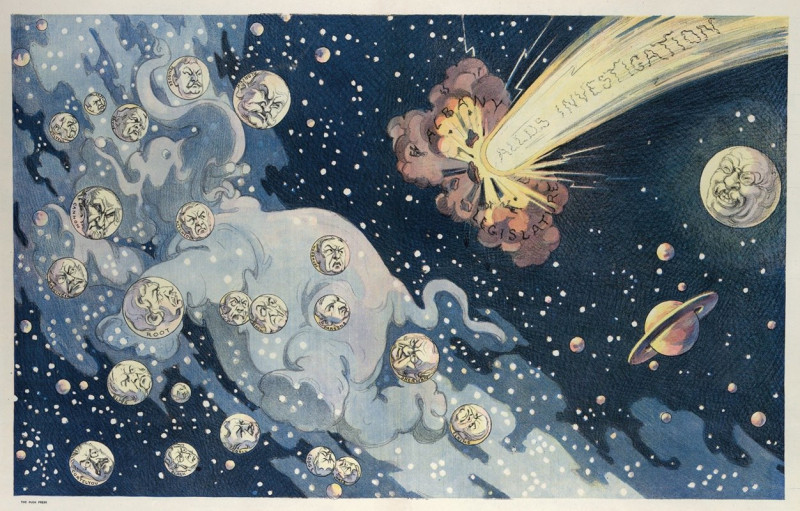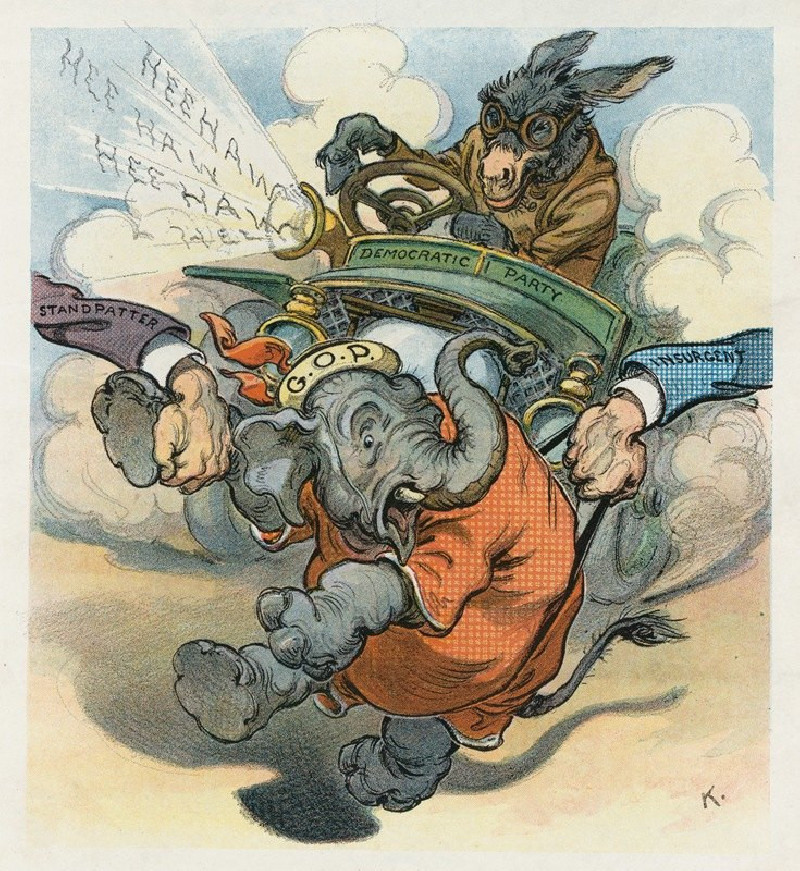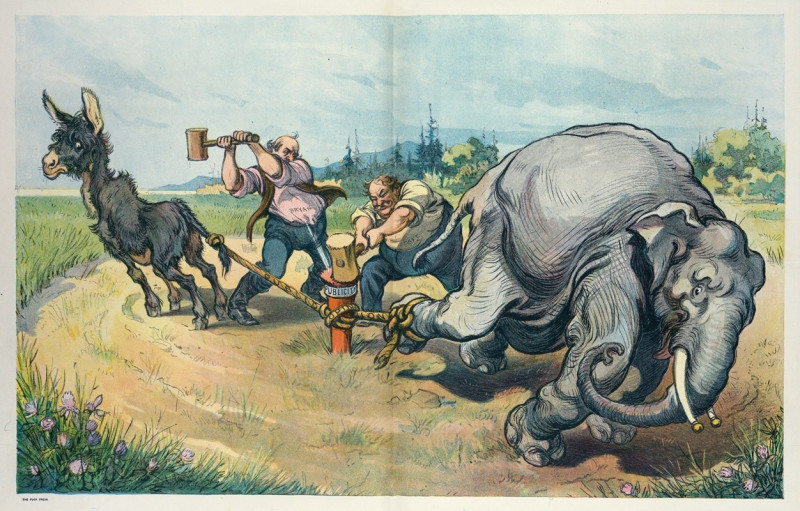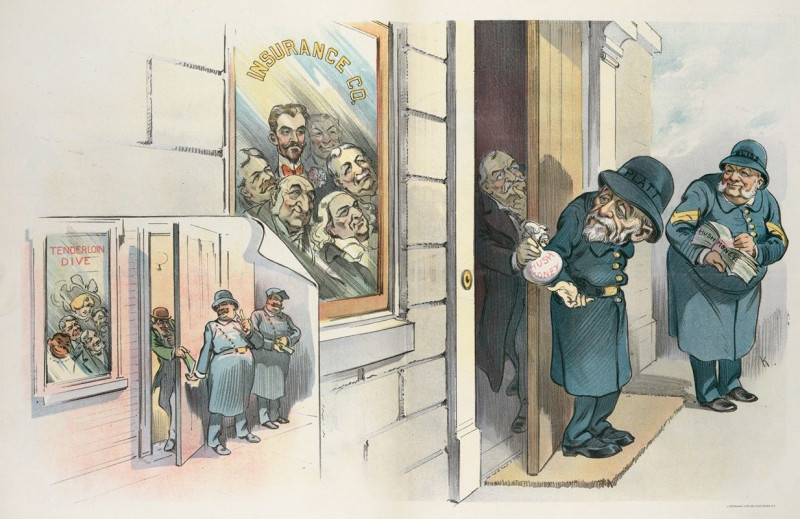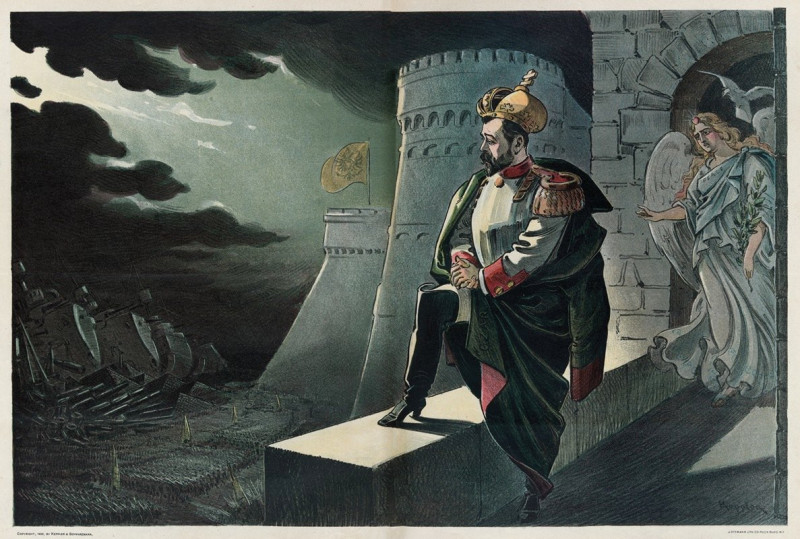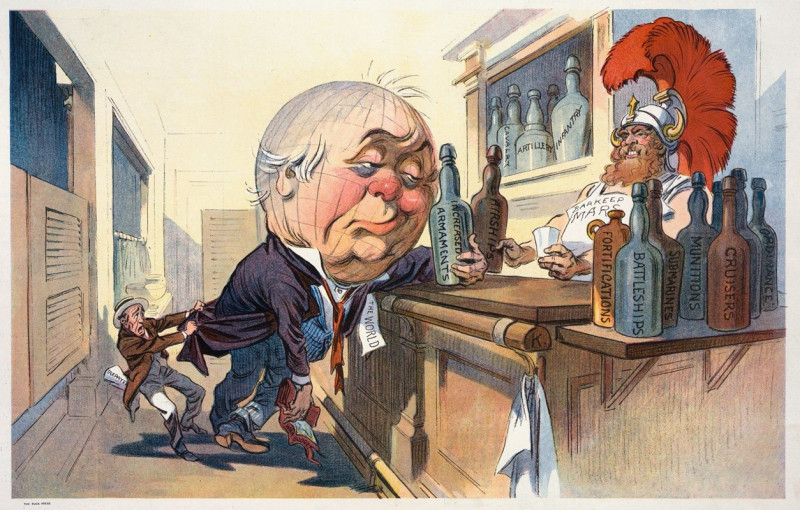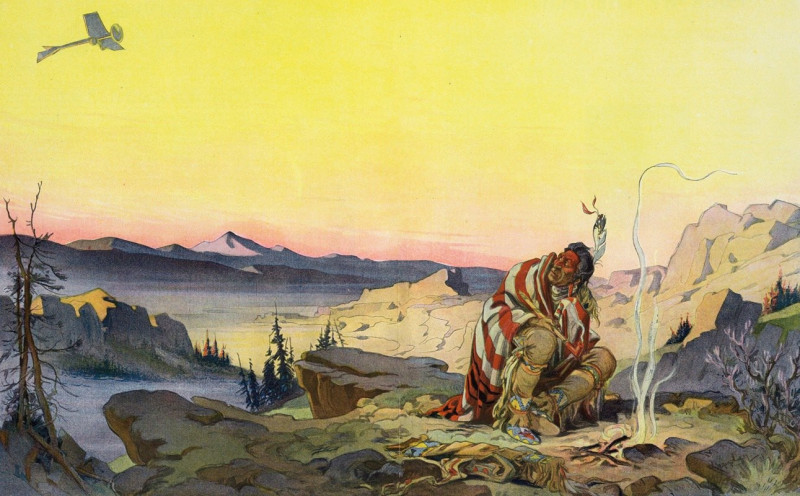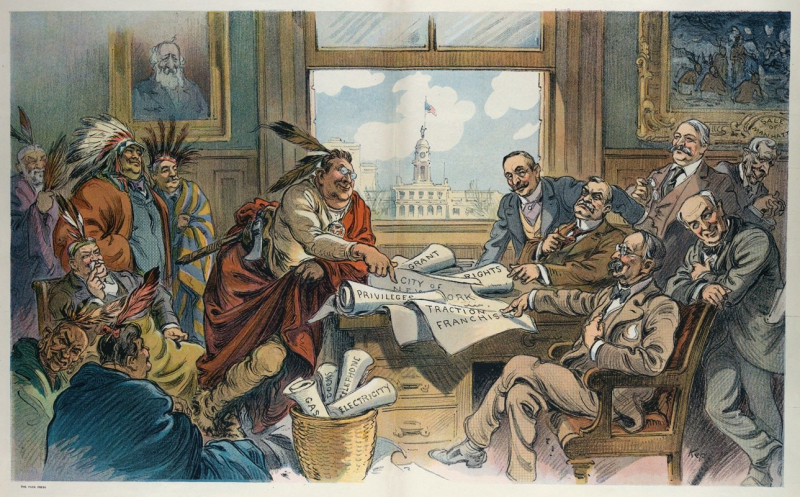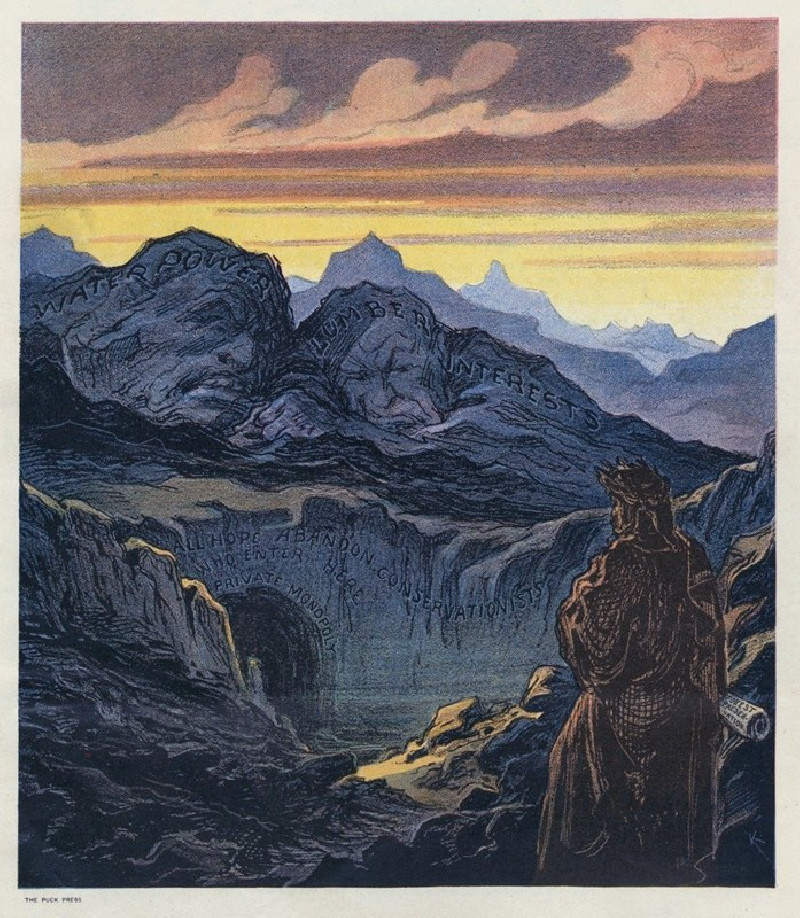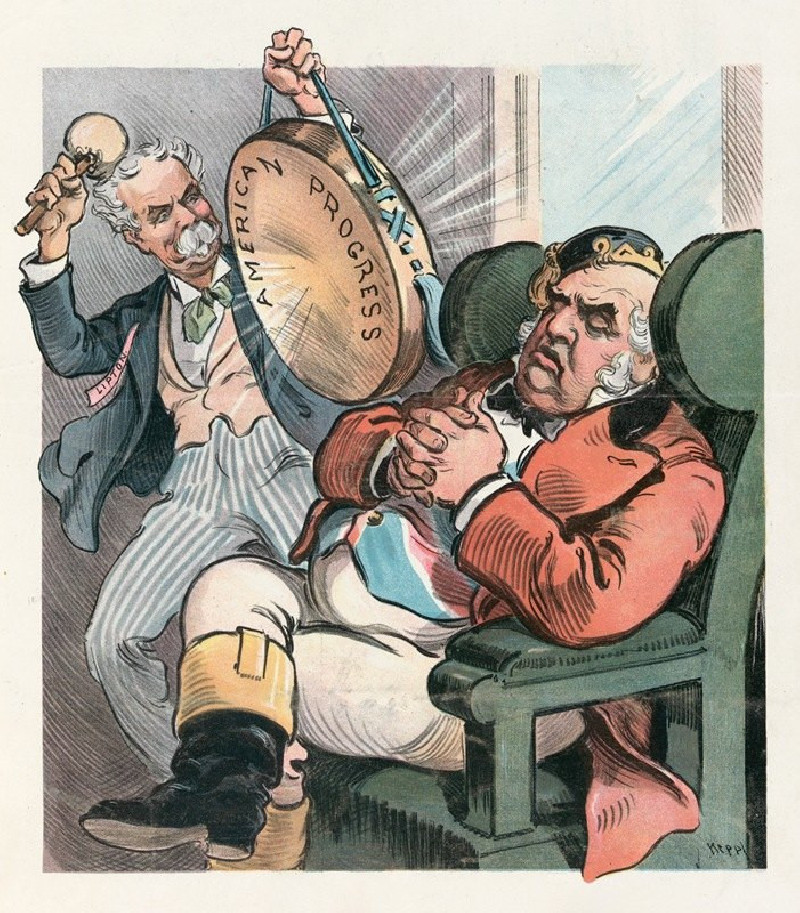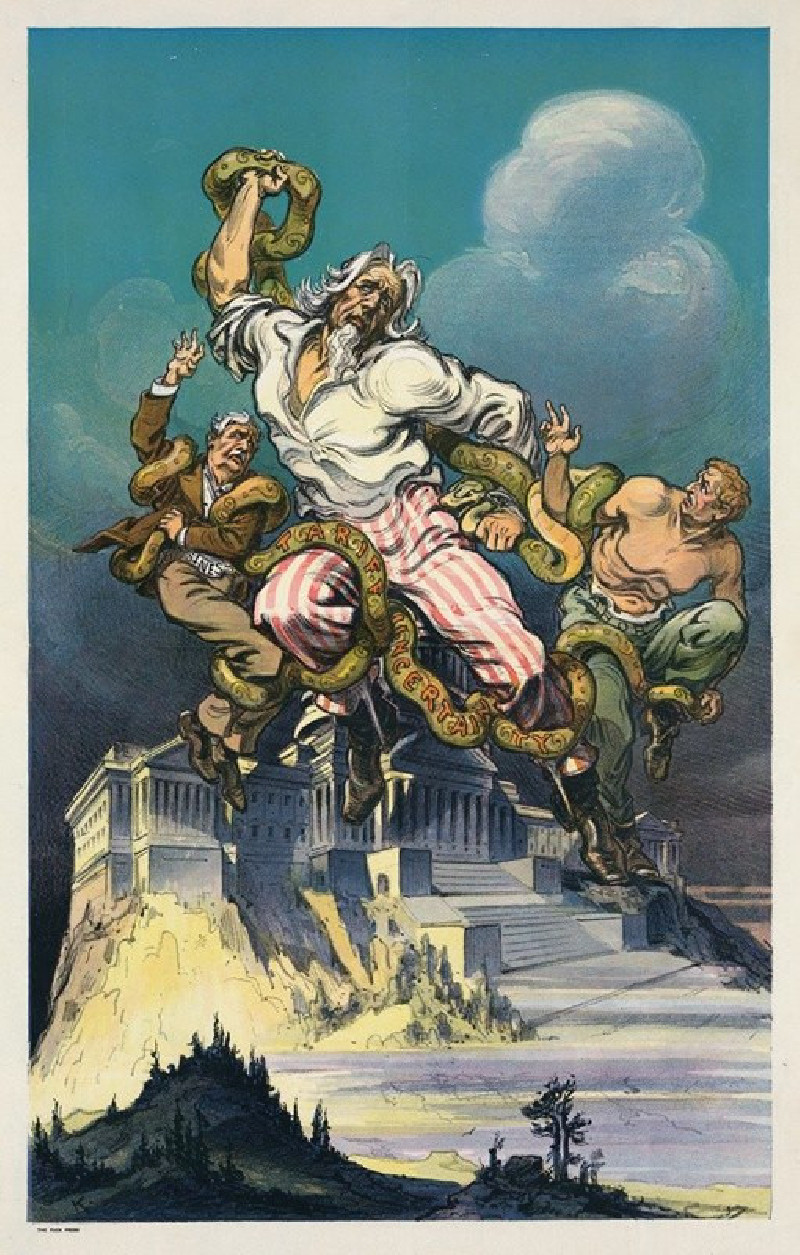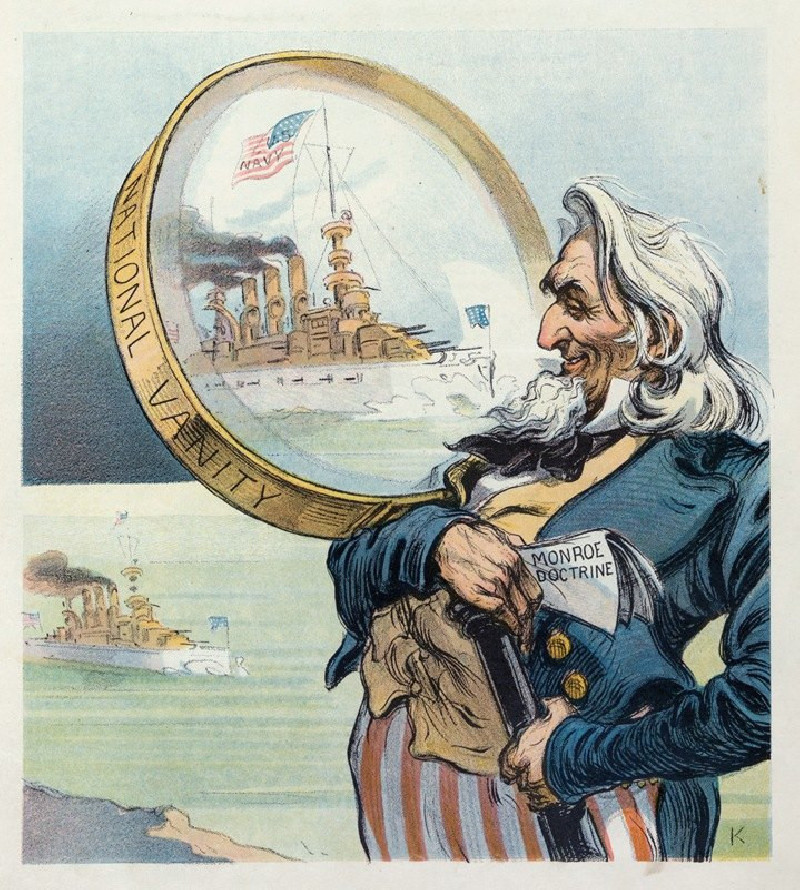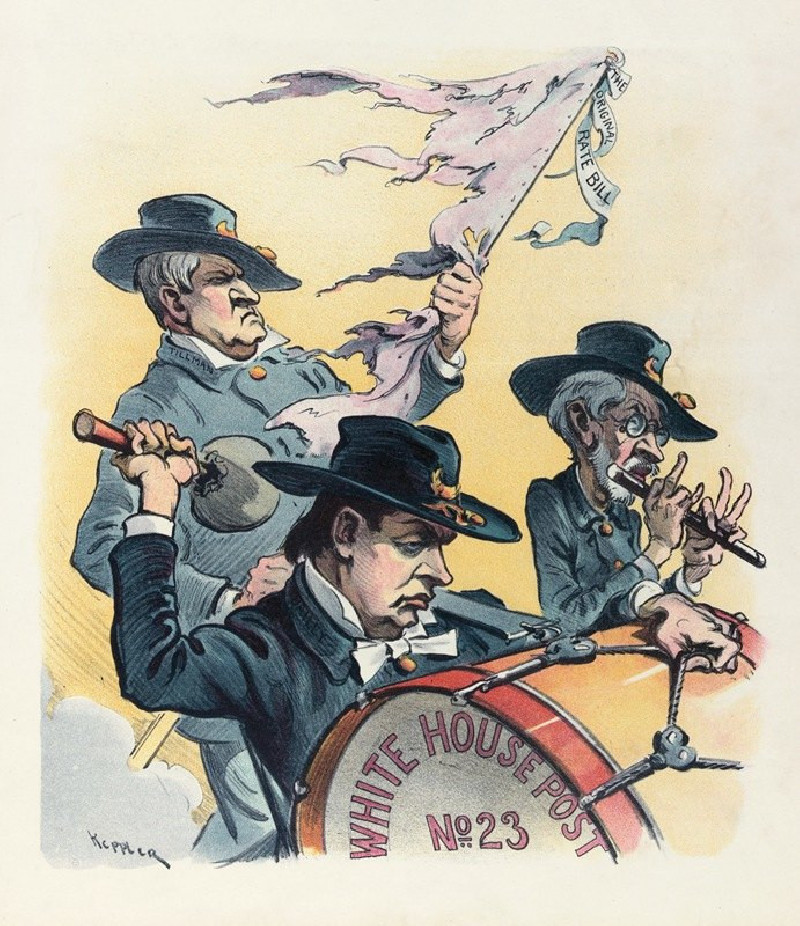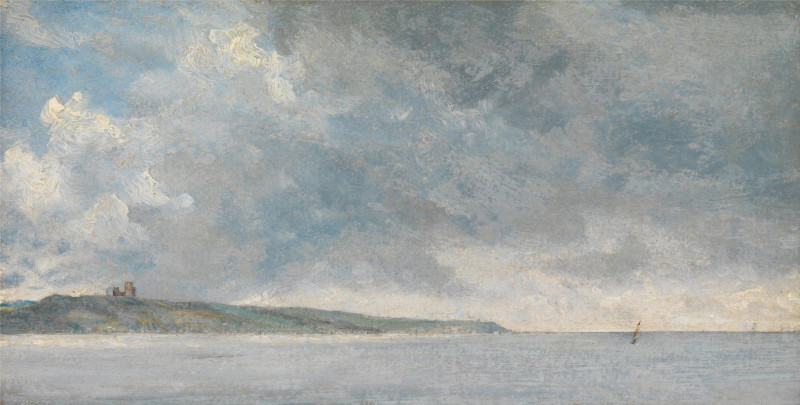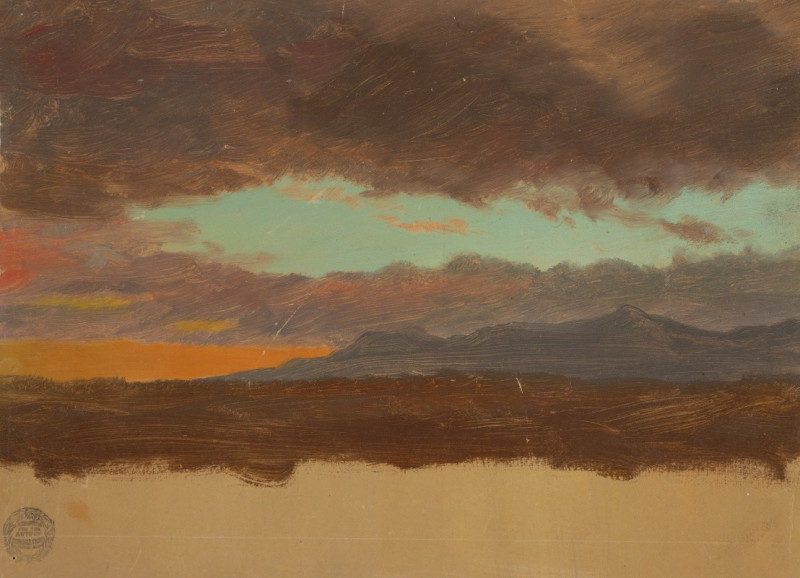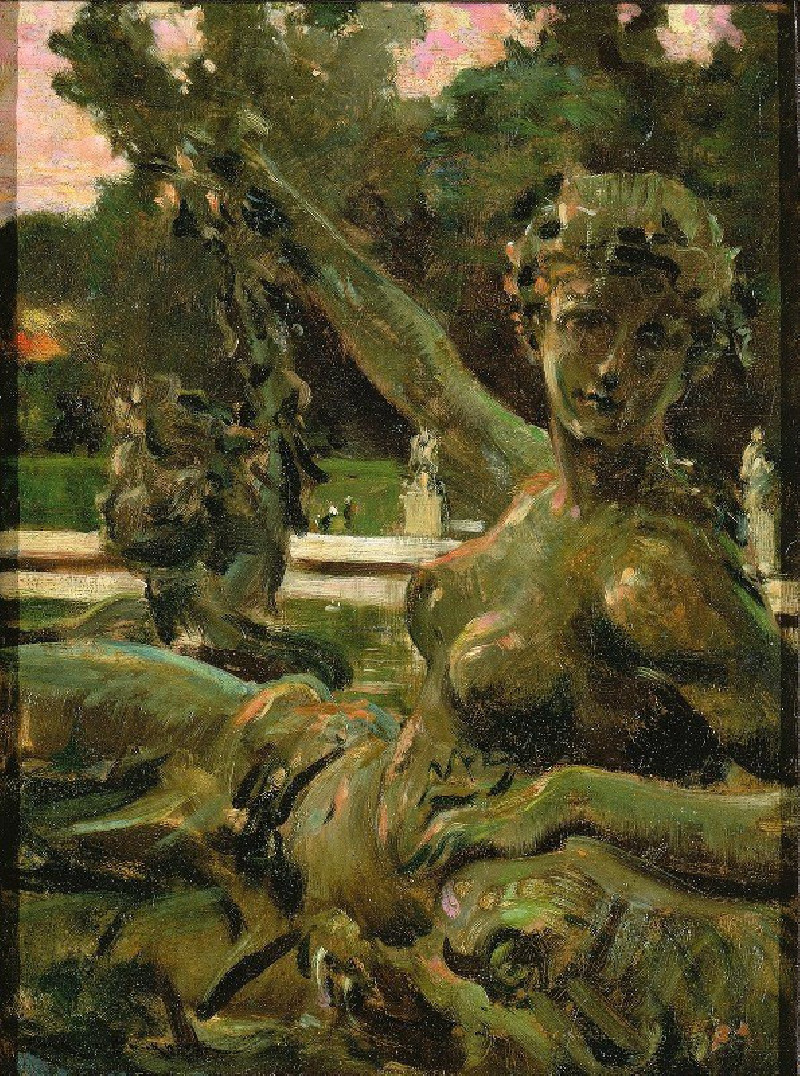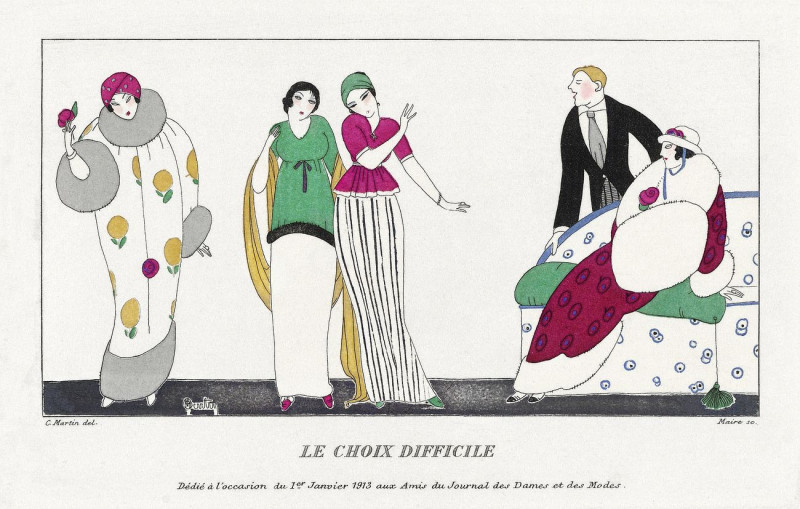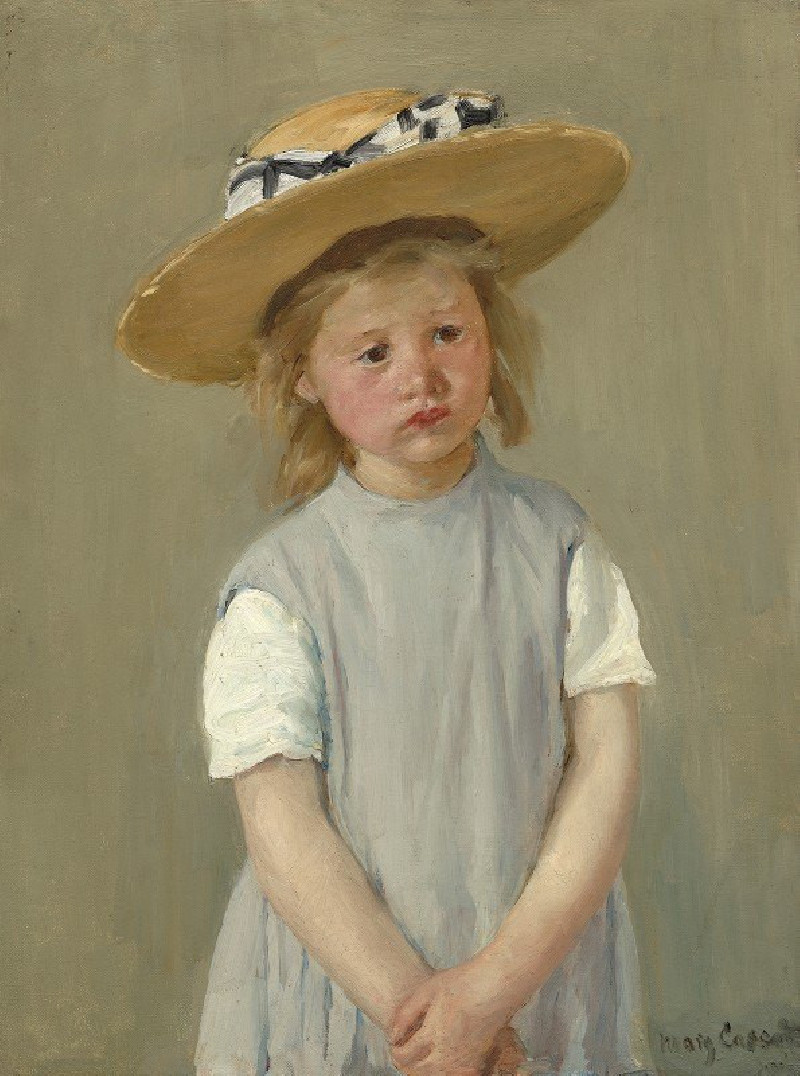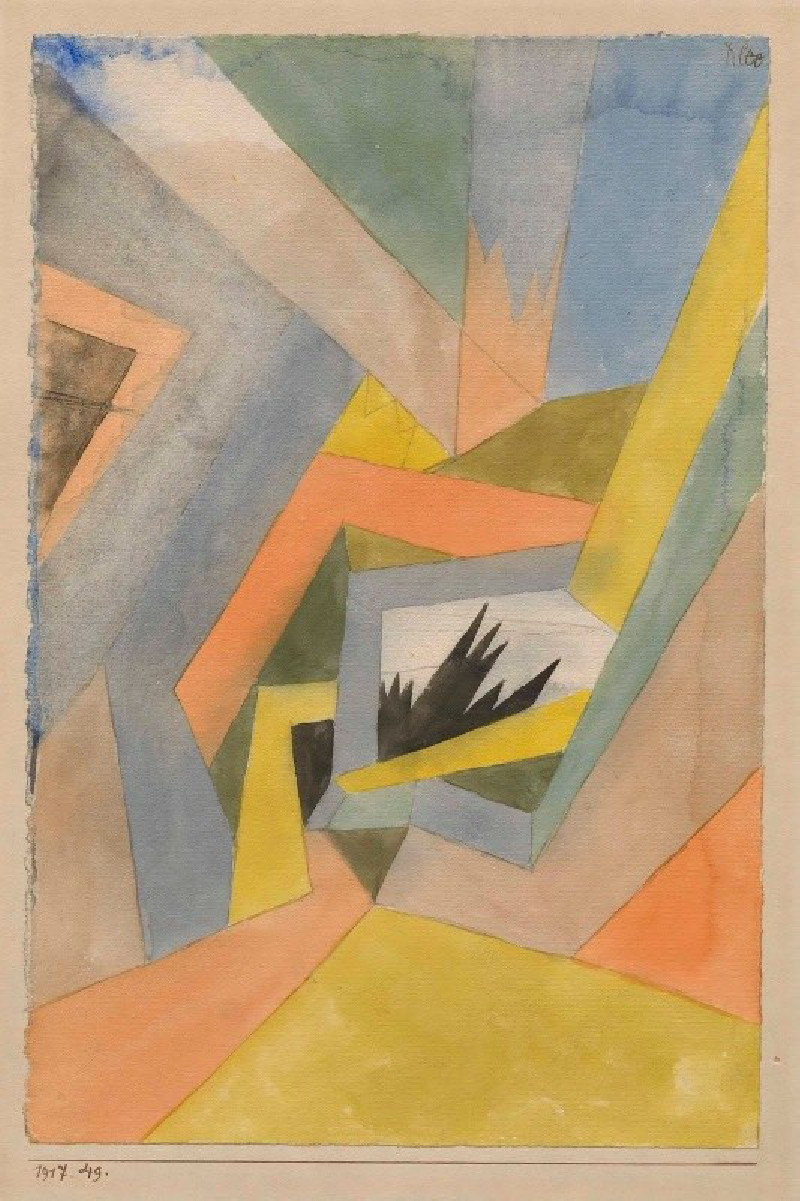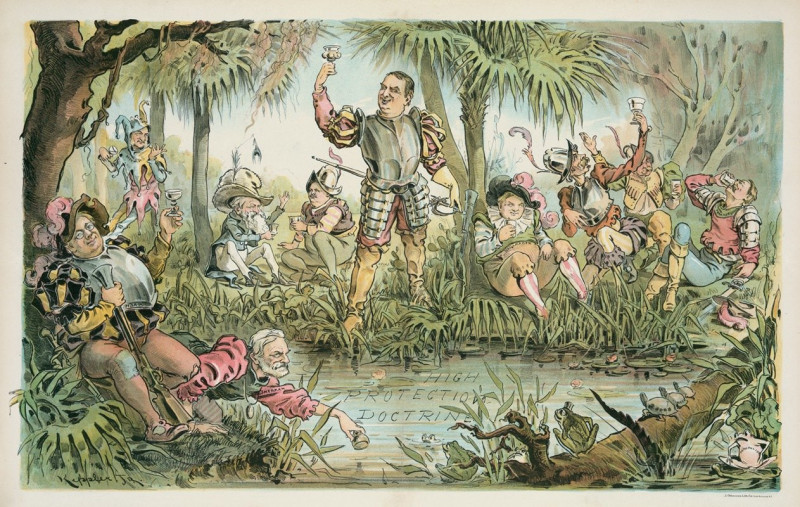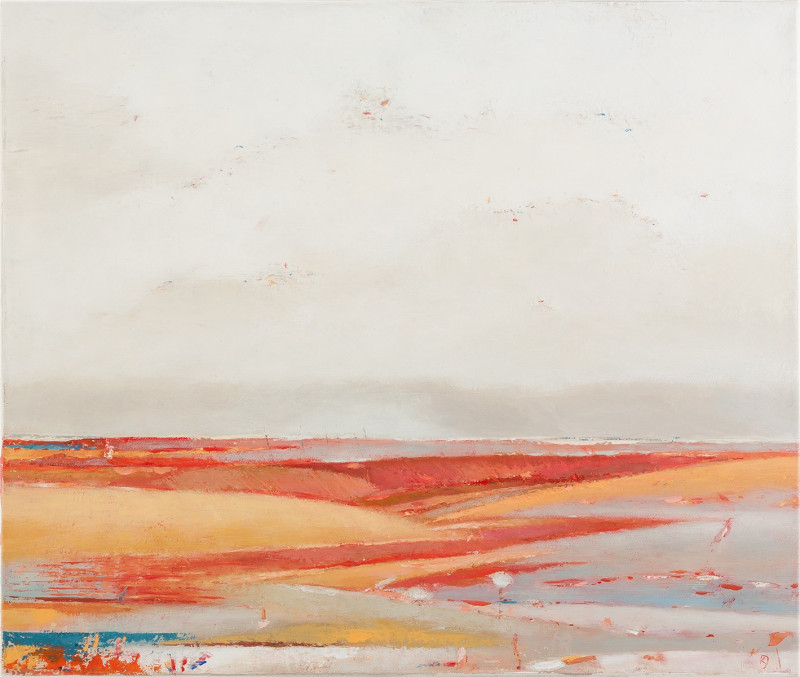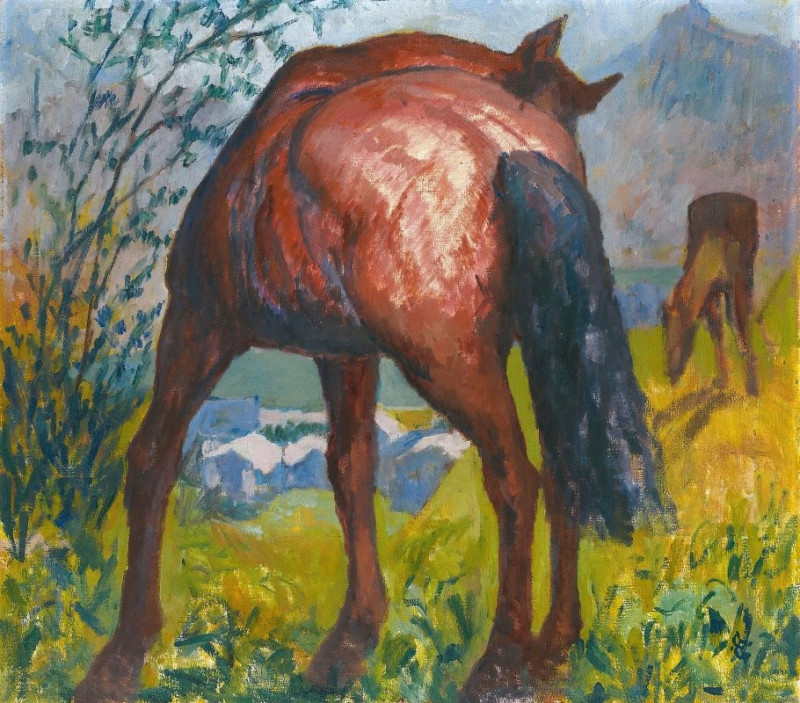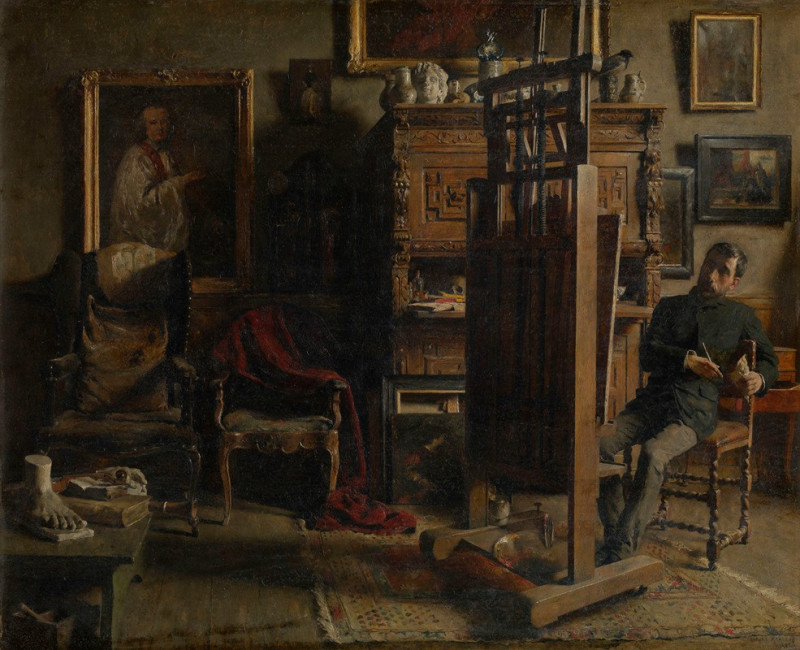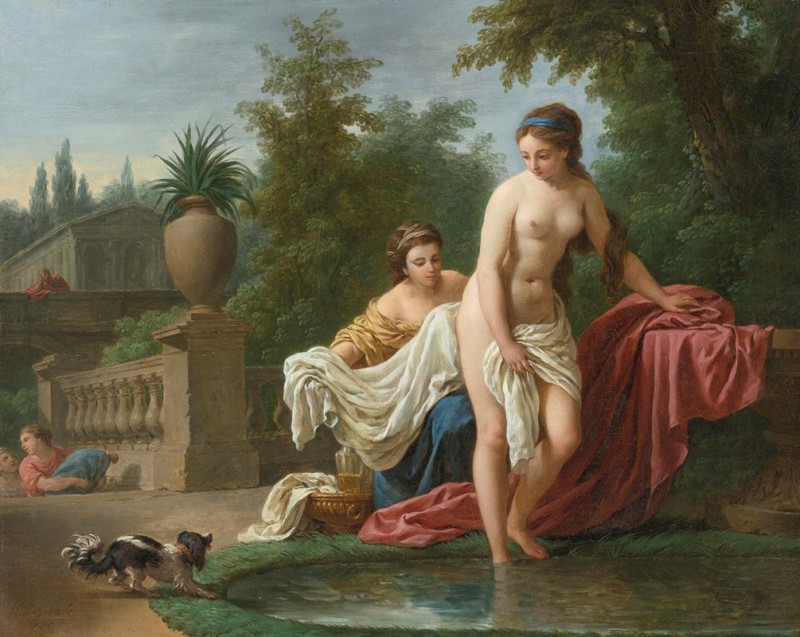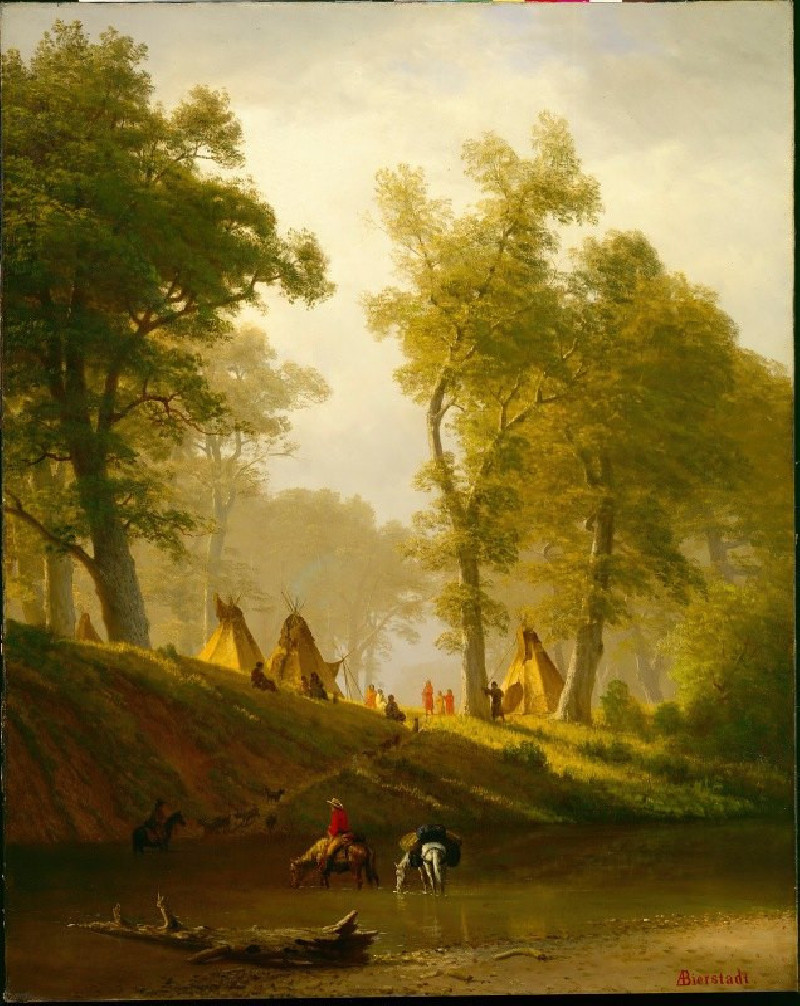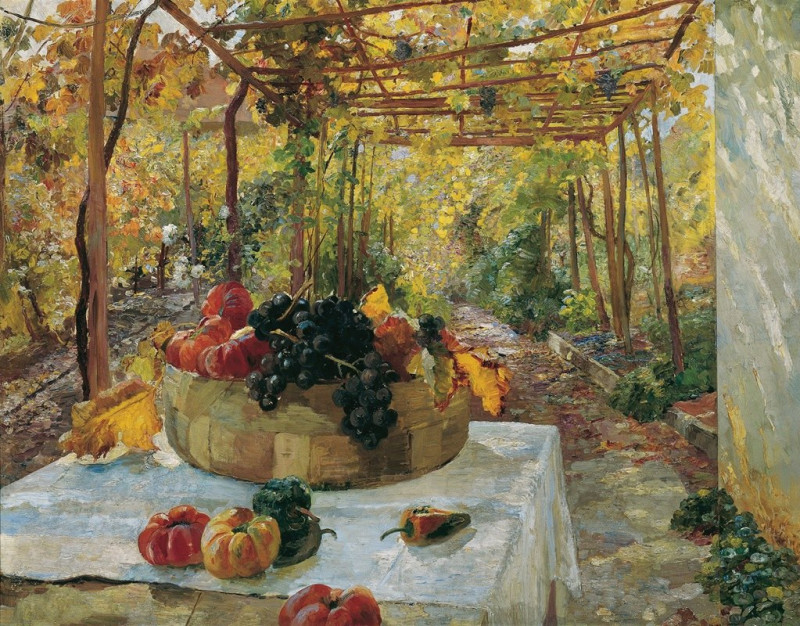The sphinx and the candidates (1907)
Technique: Giclée quality print
Recommended by our customers
More about this artwork
Description: The painting "The Sphinx and the Candidates" by Udo Keppler, crafted in 1907, is a striking visual interpretation that blends political commentary with symbolic imagery. This artwork presents an imposing sphinx with the face of Charles Evans Hughes, a significant political figure of the time, embodying the blending of judicial authority and political power. Hughes, who served as Governor of New York and later as U.S. Supreme Court Chief Justice, is depicted as a Sphinx overlooking the ruins of what appear to be legislative bodies labeled "Senate" and "Assembly."The environment of the painting is marked by desolation and decay, suggesting the erosion or undermining of democratic institutions. Political candidates, portrayed in the foreground, appear diminutive and incompetent, scrambling over the debris of a crumbling civilization. These figures likely represent the political hopefuls of the era, critiqued by Keppler for their inadequacy during a time when strong leadership was desperately needed.The use of dark, brooding colors enhances the solemn mood of the scene, with the dominating silhouette of the sphinx casting a shadow over the landscape, symbolizing the overwhelming influence and scrutiny that Hughes and figuratively, the judiciary, exert over the political sphere. Meanwhile, the bleak, barren background might reflect public disillusionment with the state of governance during that period.This evocative piece not only captures the political climate of the early 20th century but also resonates today, reminding viewers of the persistent tensions and interactions between different branches of government.
Delivery
Returns
Udo J. Keppler, since 1894. known as Joseph Keppler, Jr., was an American political cartoonist, publisher, and Native American advocate. The son of cartoonist Joseph Keppler (1838–1894), who founded Puck magazine, the younger Keppler also contributed to cartoons, and after his father's death became co-owner of the magazine under the name Joseph Keppler. He was also a collector of Native American artifacts.


